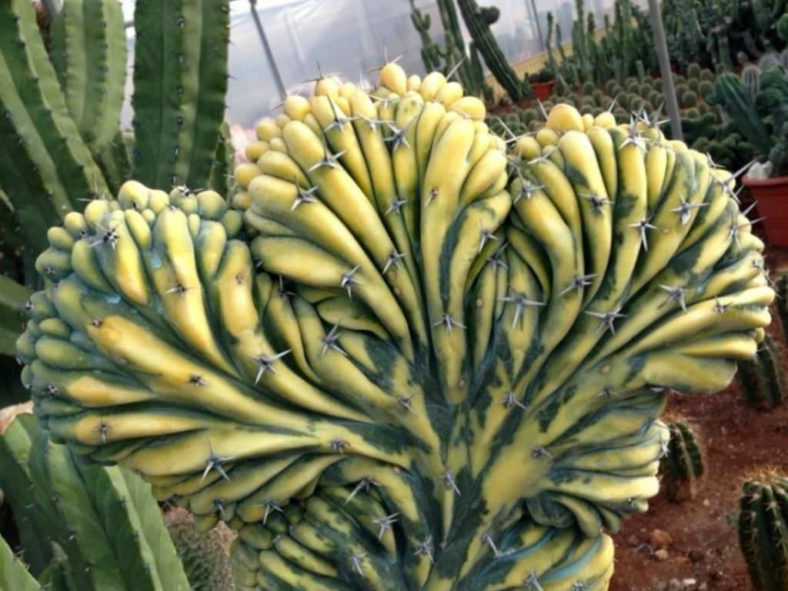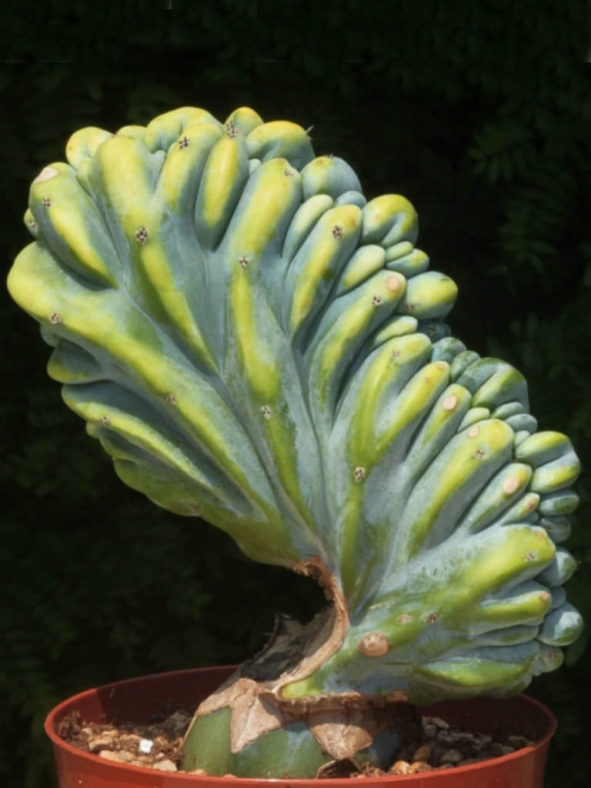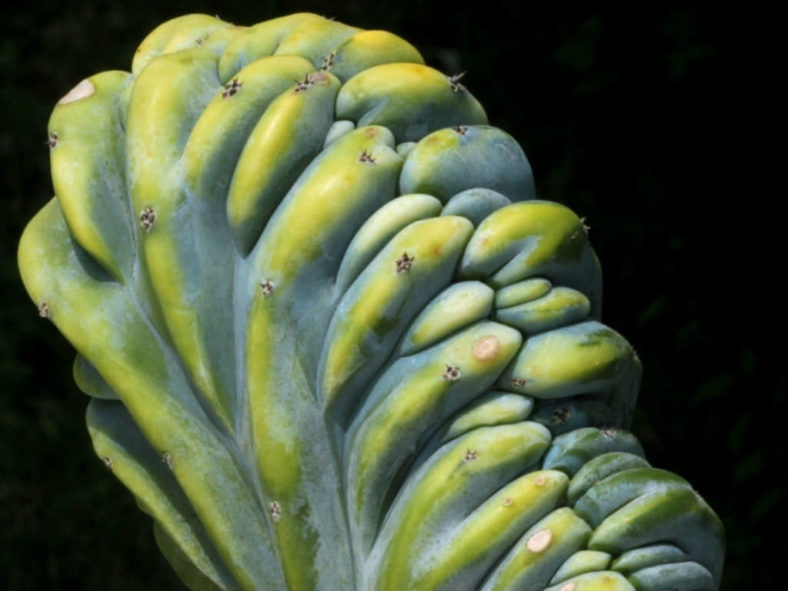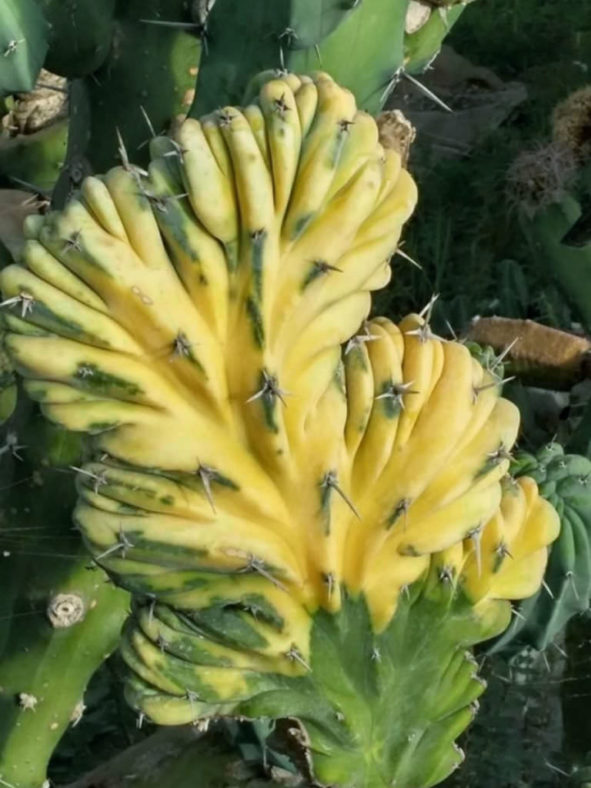Scientific Name
Myrtillocactus geometrizans f. cristatus 'Variegatus'
Accepted Scientific Name
Myrtillocactus geometrizans f. cristatus P.V.Heath
Common Name(s)
Crested Blue Candle, Crested Blue Flame, Crested Blue Myrtle, Dinosaur Back Plant
Synonym(s)
Myrtillocactus geometrizans f. cristatus variegatus
Scientific Classification
Family: Cactaceae
Subfamily: Cactoideae
Tribe: Echinocereeae
Genus: Myrtillocactus
Origin
This cactus is a form of Myrtillocactus geometrizans f. cristatus selected for its variegated stems.
Description
Myrtillocactus geometrizans f. cristatus 'Variegatus' is a stunning, slow-growing cactus with variegated stems with a central growing point that creates multiple growing points that crowd and push against each other. The stems are glaucous blue-green with irregular yellow markings. Some specimens are stable, while others can revert to normal growth.

Hardiness
USDA hardiness zones 9a to 11b: from 20 °F (−6.7 °C) to 50 °F (+10 °C).
How to Grow and Care
In summer, place Myrtillocactus in direct sunlight. In winter, find a cooler, light spot. This will allow it to go well-rested into next spring, making it more likely to flower.
This easy-care plant doesn't need much water. Allow the soil to dry out before you give it another drink, and keep the soil completely dry in winter. A well-drained soil mix with small gravis is needed to ensure drainage.
Myrtillocactus are semi-hardy. They should not be exposed to temperatures below 25 °F (-4 °C), or they may die. Nevertheless, it is good advice never to let the nighttime temperatures fall below 50 °F (10 °C).
Feed your Myrtillocactus monthly in spring and summer using special cactus food.
Since they are big-sized plants, they need plenty of space for their roots. Repotting should be done every other year or when the plant has outgrown its pot.
Learn more at How to Grow and Care for Myrtillocactus.
Links
- Back to genus Myrtillocactus
- Succupedia: Browse succulents by Scientific Name, Common Name, Genus, Family, USDA Hardiness Zone, Origin, or cacti by Genus
Photo Gallery
Click on a photo to see a larger version.


